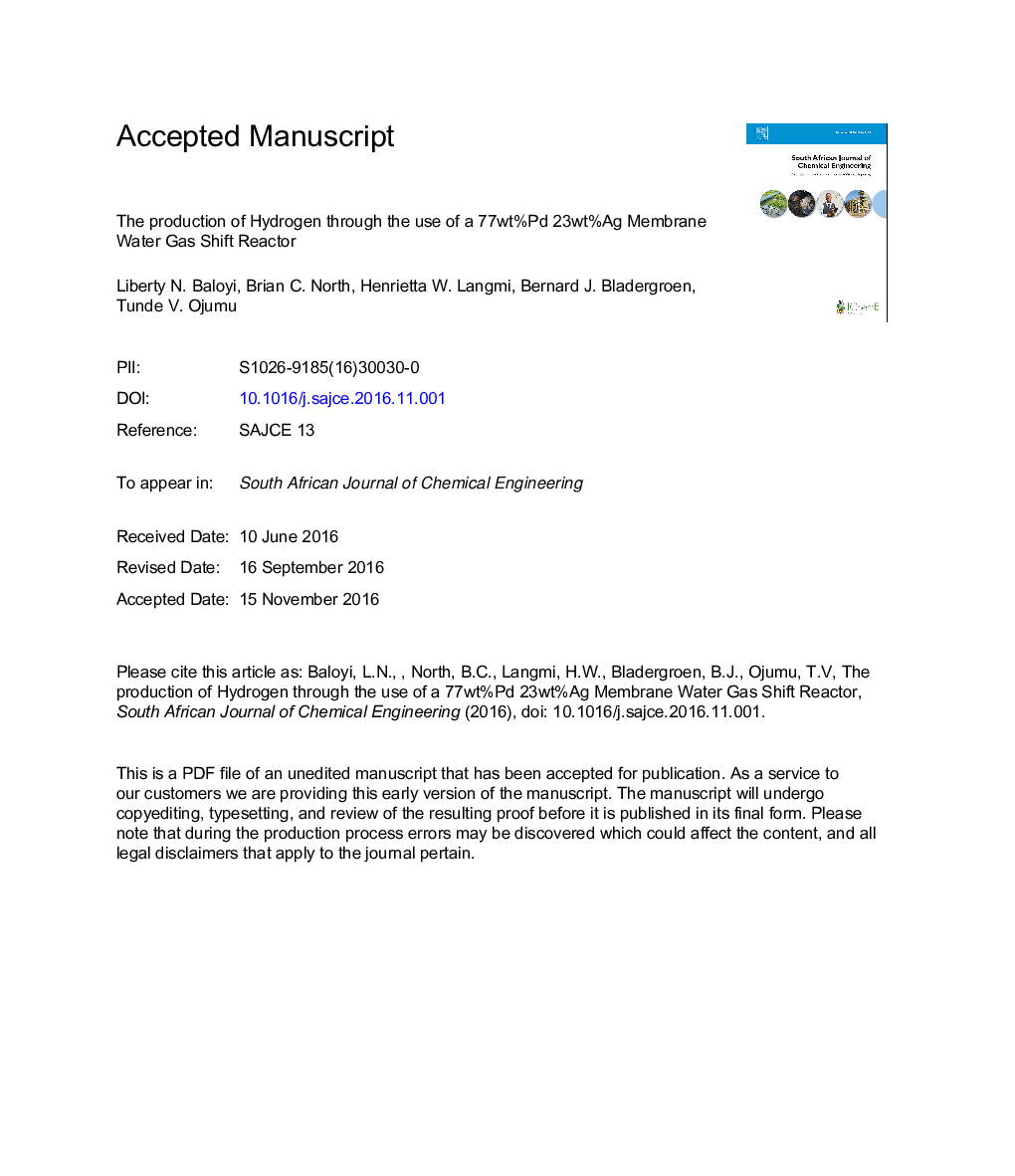| Article ID | Journal | Published Year | Pages | File Type |
|---|---|---|---|---|
| 8917130 | South African Journal of Chemical Engineering | 2016 | 28 Pages |
Abstract
Hydrogen as an energy carrier has the potential to decarbonize the energy sector. This work presents the application of a palladium-silver (Pd-Ag) membrane-based reactor. The membrane reactor which is made from Pd-Ag film supported by porous stainless steel (PSS) is evaluated for the production of hydrogen and the potential replacement of the current two-stage Water-Gas Shift (WGS) reaction by a single stage reaction. The permeability of a 20 μm Pd-Ag membrane reactor was examined at 320 °C, 380 °C and 430 °C. The effect of continuous hydrogen exposure on the Pd-Ag membrane at high temperature and low temperature was examined to investigate the thermal stability and durability of the membrane. During continuous operation to determine thermal stability, the membrane reactor exhibited stable hydrogen permeation at 320 °C for 120 h and unstable hydrogen permeation at 430 °C was observed. For the WGS reaction, the reactor was loaded with Ferrochrome catalyst. The membrane showed the ability to produce high purity hydrogen, with a CO conversion and an H2 recovery of 84% and 88%, respectively. The membrane suffered from hydrogen embrittlement due to desorption and adsorption of hydrogen on the membrane surface. SEM analysis revealed cracks that occurred on the surface of the membrane after hydrogen exposure. XRD analysis revealed lattice expansion after hydrogen loading which suggests the occurrence of phase change from α-phase to the more brittle β-phase.
Keywords
Related Topics
Physical Sciences and Engineering
Chemical Engineering
Chemical Engineering (General)
Authors
Liberty N. Baloyi, Brian C. North, Henrietta W. Langmi, Bernard J. Bladergroen, Tunde V. Ojumu,
